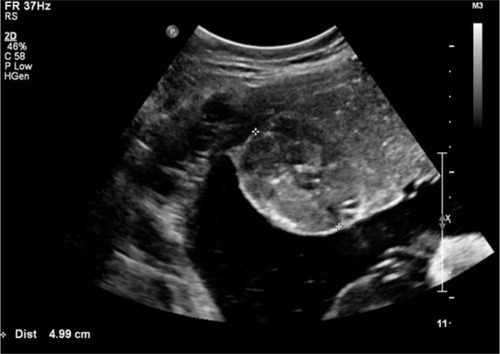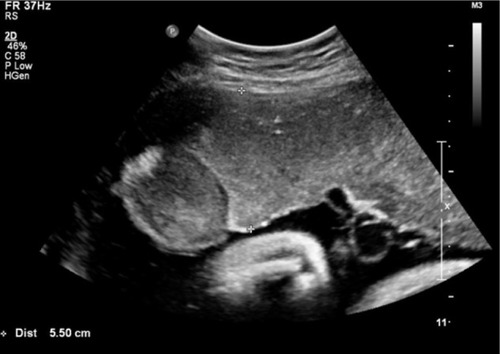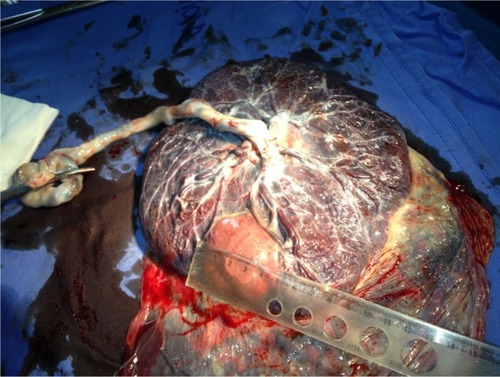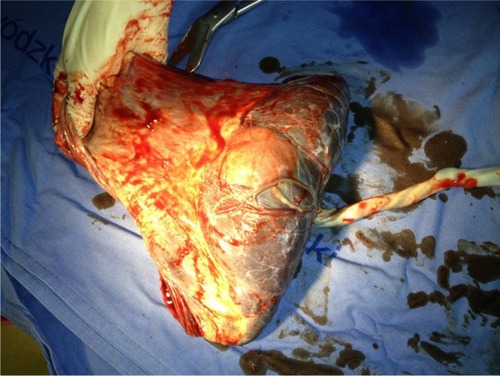Figures & data
Figure 1 A gray-scale ultrasound image shows a well-defined circumscribed ovoid heteroechogenic placental mass with a 4.99 cm diameter.

Figure 2 A gray-scale ultrasound image shows the protruding placental mass into the amniotic cavity from a placenta with the thickest anteroposterior diameter of 5.5 cm.




